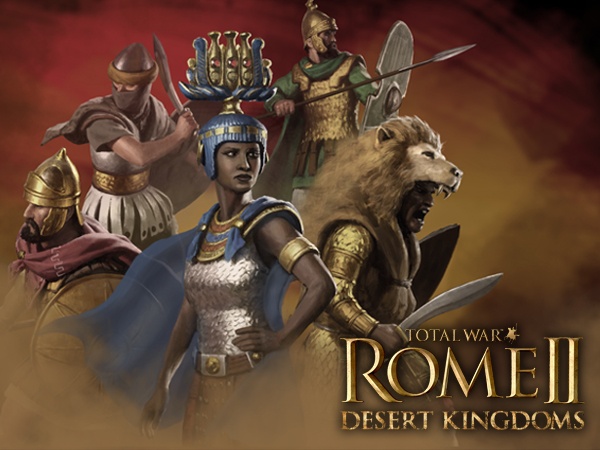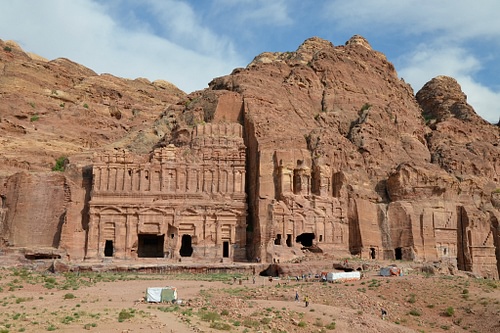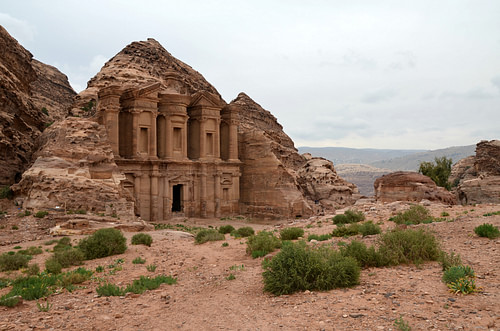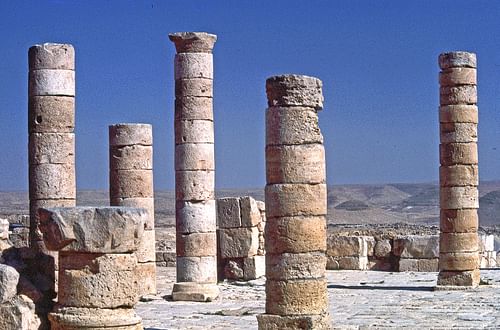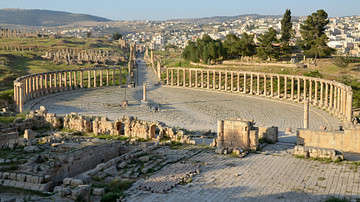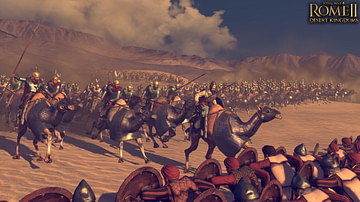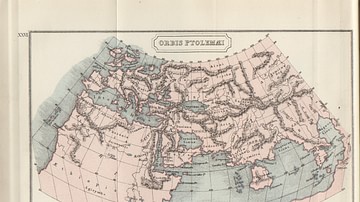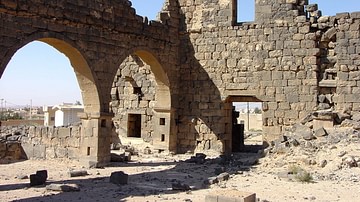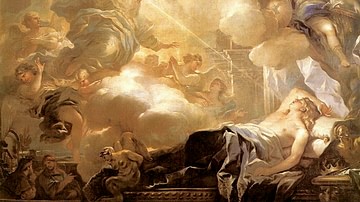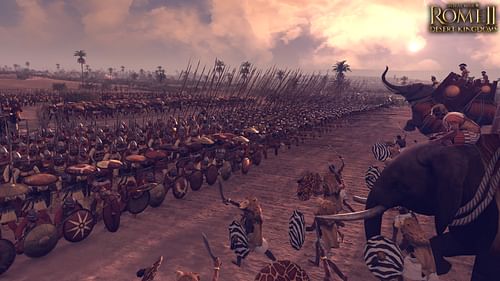
The Nabatean Kingdom was a powerful political entity which flourished in the region of modern-day Jordan between the 4th century BCE and c. 106 CE and is best known today for the ruins of its capital city of Petra. Although it is clear that a wealthy community was thriving in the immediate vicinity of Petra by 312 BCE (attested to by the Greek expedition mounted against it), scholars usually date the Nabatean Kingdom from 168 BCE, the date of their first known king, to 106 CE when it was annexed by the Roman Empire under Trajan (98-117 CE).
Nabateans were Arabian nomads from the Negev Desert who amassed their wealth first as traders on the Incense Routes which wound from Qataban (in modern-day Yemen) through neighboring Saba (a powerful trade hub) and on toward Gaza on the Mediterranean Sea. Their constant travel on these routes intimately familiarized them with the area and their skill in finding, and preserving, sources of water enabled them to transport goods more quickly and efficiently than others.
The site of their city of Petra, carved from the sandstone cliffs of mountains and not easily accessible, would have been built after they were already wealthy from trade. Their decision to build in that particular area has mystified scholars and historians for centuries because there was no natural source of water there and the locale was far from hospitable. The location actually makes a great deal of sense, however, as their position at Petra allowed them to monitor the Incense Routes and tax caravans passing through their territory, thus enriching them further, and its inaccessibility provided protection.
Following annexation by Rome in 106 CE, Petra and other Nabatean cities such as Hegra steadily lost their hold over the Incense Routes and their control over the region generally. The rise of the Syrian city of Palmyra as a center of trade diverted caravans from the Nabatean cities which then declined in wealth and prestige. The emperor Aurelian's destruction of Palmyra c. 272 CE came too late to resuscitate the Nabatean economy, and by the time of the Arab Invasion of the 7th century CE, the Nabatean Kingdom had been forgotten.
Early Trade on the Incense Routes
The term 'Incense Routes' refers to a number of different directions traders took between southern Arabia and the port of Gaza between the 7th/6th centuries BCE and the 2nd century CE. Trade along these routes seems to have become most lucrative c. 3rd century BCE by which time the Nabateans had control of the most important cities along the routes. The Incense Routes do not describe a single road or roads between Arabia and Gaza but a general direction merchants traveled between those two points. According to Pliny the Elder (23-79 CE), the routes encompassed 1,200 miles (1,931 km) and took 65 days to travel one way with a stopover at a city, ideally, every night.
These stops were not merely for rest but were an important aspect of business. The city of Mamshit, for example, was famous for their Arabian horses which commanded high prices. Merchants would therefore move from city to city, trading their goods at each stop before reaching the final destination of the port at Gaza. As certain cities began taxing merchants more heavily, trade would veer toward others which were considered more hospitable. The cities controlled by the Nabateans by the 3rd century BCE, however, had become such an integral part of trade along the routes that they could not be avoided.
Among these cities were those which would become known as Haluza, Mamshit, Avdat, and Shivta all of which offered goods for trade as well as comfortable accommodations for the traders. Nabatean forts erected along the routes guaranteed the safety of the merchants but, as with the tax they levied on traders, their protection came at a price. Although the Nabateans were already quite wealthy by the 3rd century BCE as traveling merchants, they became more so through their tight control of the Incense Routes once they had established their kingdom.
Wealth, Customs, Women's Rights
It is thought that they were able to become so successful through their early control of water along the routes. While other Arabian tribes had to barter for water, the Nabateans dug cisterns which filled with rainwater and then covered them and left signs which only they would recognize. Following this policy, they were able to travel with greater ease than their competition in trade. They were also able to solve the problem of water for Petra through technological ingenuity. The Nabateans orchestrated an elaborate system of water transportation and conservation which was unrivaled in its day and has not yet been surpassed in the region. The area is subject to flash floods, and through a careful construction of dams, cisterns, and aqueducts, the Nabateans were able to create an artificial oasis in an arid district which not only sustained them but elevated them to the most powerful kingdom in the region.
Precisely when cities like Petra and Hegra were constructed is unclear but they were well established by the later 4th century BCE when the wealth of the Nabateans attracted the attention of the Greek general (and future king) Antigonus I (r. 306-301 BCE). In 312 BCE, Antigonus pretended friendship with the Nabateans and then sent his son Demetrius in a surprise attack on Petra. The Nabateans had not been fooled, however, and were prepared for Demetrius. His offensive failed and he came to terms with the Nabateans and returned to his father; both were driven from the region by the Nabateans in a later engagement.
The immense wealth of the Nabatean Kingdom grew and became legendary in its own time. Centuries later, it was still mentioned by historians such as Strabo (died c. 23 CE) and Diodorus Siculus (1st century BCE). These two writers, as well as others, portray the Nabateans uniformly in a positive light. Diodorus addresses the wealth of the Nabateans, as well as their customs, in Book XIX of his Histories:
For the sake of those who do not know, it will be useful to state in some detail the customs of these Arabs, by following which, it is believed, they preserve their liberty. They live in the open air, claiming as native land a wilderness that has neither rivers nor abundant springs from which it is possible for a hostile army to obtain water.
It is their custom neither to plant grain, set out any fruit-bearing tree, use wine, nor construct any house; and if anyone is found acting contrary to this, death is his penalty.
They follow this custom because they believe that those who possess these things are, in order to retain the use of them, easily compelled by the powerful to do their bidding. Some of them raise camels, others sheep, pasturing them in the desert. While there are many Arabian tribes who use the desert as pasture, the Nabataeans far surpass the others in wealth although they are not much more than ten thousand in number; for not a few of them are accustomed to bring down to the sea frankincense and myrrh and the most valuable kinds of spices, which they procure from those who convey them from what is called Arabia Eudaemon [“Fortunate Arabia”, modern-day Yemen].
They are exceptionally fond of freedom; and, whenever a strong force of enemies comes near, they take refuge in the desert, using this as a fortress; for it lacks water and cannot be crossed by others, but to them alone, since they have prepared subterranean reservoirs lined with stucco, it furnishes safety.
As the earth in some places is clayey and in others is of soft stone, they make great excavations in it, the mouths of which they make very small, but by constantly increasing the width as they dig deeper, they finally make them of such size that each side has a length of one plethrum [101 ft/30 metres].
After filling these reservoirs with rain water, they close the openings, making them even with the rest of the ground, and they leave signs that are known to themselves but are unrecognizable by others.
They water their cattle every other day, so that, if they flee through waterless places, they may not need a continuous supply of water. They themselves use as food flesh and milk and those of the plants that grow from the ground which are suitable for this purpose; for among them there grow the pepper and plenty of the so‑called wild honey from trees, which they drink mixed with water. (XIX.94.2-10)
Strabo presents a similar picture of the Nabateans but contradicts Diodorus on the custom of drinking wine, claiming that they cultivated grapes for wine and drank at banquets. He does make the point, however, that they did not drink to excess like the Romans did but restricted themselves to no more than eleven cups in the course of an evening (Geography XVI.4.26). He further details how they used camels instead of horses, wore loincloths instead of tunics, and were so democratic that their king would insist on serving others at a banquet.
Women were considered equal to men in Nabatean culture. Inscriptions indicate that women were priestesses, co-rulers or autonomous monarchs, could inherit and dispose of property, owned their own tombs, brought lawsuits and represented themselves in court, and were depicted on coins. Some of the most popular deities in the Nabatean pantheon were female such as Al-'Uzza, Manawat, and Allat.
Nabatean Religion
Nothing is known of the religious practices of the Nabateans except that they were polytheistic and worshiped the sun in ceremonies conducted on the tops of temples and honored their gods in private ceremonies in the home. There was a priestly class which was open to both men and women, but how one was chosen or what one's preparation for the priesthood may have been is unknown. It is likely that, as in Egypt, the priests and priestess tended to the gods, not the people, and there does not seem to be any institution of public worship services other than festivals.
The gods of the Nabatean pantheon were never represented in full-scale statuary but appear carved into doorways, in the nooks of temples, on coins, tombs, ceramics, and as amulets and charms. The three most important gods in the early years of the culture were:
Al-Qaum - god of war, protector of the people, god of nighttime, protector of souls
Al-Kutby - god of knowledge, writing, and divination
Al'Uzza - supreme mother goddess, associated with divine and earthly power
Later deities were Manawat (goddess of fate and fertility), Allat (goddess of renewal, spring, and fertility), and Dushara (also given as Dushares, god of the mountains and daytime, associated with the sun). Of all these deities, Dushara endured the longest and was the deity worshiped from the rooftops of Nabatean temples. He was still represented on coinage following the annexation of Nabatea by Rome.
The Nabatean Kings & Conflicts
The Nabateans were literate and developed the Arabic script but they wrote nothing of their own history. The story of their culture, customs, and kings was written by Greek and Roman writers and is suggested by their architecture, art, and brief inscriptions they left behind. As their kingdom developed, the Nabateans came into closer contact and conflict with those of the surrounding regions and their kings are mentioned increasingly by writers from those nations.
There was an early king possibly named Rekem or Raqmu for whom the city now known as Petra was named. Petra (from the Greek for “rock”) was the Greek name for the Nabatean capital of Raqmu. When this early king lived and reigned is as mysterious as the date when Petra was carved from the cliff sides. The first historically attested king is Aretas I (c. 168 BCE) and his reign marks the beginning of the Nabatean Kingdom.
Aretas I's date is attested by a Nabatean inscription citing 168 BCE and he is also mentioned in the biblical Book of II Maccabees (5:8) which confirms his reign at that time. He expanded the territory of Nabatea and was known as “the Tyrant of the Arabs” by his enemies. He supported the Maccabees of Judea in their struggle against the Seleucid Greeks (c.168/167-c.160 BCE) and allowed the forces of Judas Maccabeus to conduct raids from his territory.
The next Nabatean monarch - said to have succeeded Aretas I but most likely a later king - is known as Aretas II (also as Erotimus, r. c. 120/110-96 BCE). Aretas II came into conflict with the Hasmonean Dynasty installed by the Maccabees owing to the Judean policies of expansion. The Hasmonean king Alexander Janneus (r. 103-76 BCE) destroyed Gaza and took control of the terminus of the Incense Routes, infringing on Nabatean profits.
Aretas II's successor, Obodas I (c. 96-85 BCE) defeated Janneus in battle and reclaimed Gaza. He then defeated the Seleucid Greeks under Antiochus XII Dionysius (87-84 BCE), killing the king and scattering his army. After this victory, he was deified by his people as attested by a memorial at his grave in the city of Avdat. He was succeeded by his brother Rabbel I (c.85 BCE) who was killed in battle and the throne passed to another brother who took the throne name Aretas III (c. 85-60 BCE).
Aretas III enlarged Nabatean territory to its greatest extent, controlling trade routes from Syria across Arabia toward the southern coast. In 64 BCE the Roman general Pompey invaded and took Syria for Rome and his general Scaurus was sent to take Petra. Scaurus had no more success than Demetrius had centuries before, but the Roman army was far more powerful than the earlier Greek forces, and the Nabateans were forced to pay tribute to Rome to retain their independence.
Aretas III was succeeded by Obodas II (c. 60-59 BCE) who died shortly after coming to power, and the throne passed to Malichus I (c. 59-30 BCE) who was forced to submit to Herod the Great as a vassal. He was succeeded by Obodas III (c. 30-9 BCE) who defended the Nabatean Kingdom against Rome primarily by sending his chief minister Syllaeus to “guide” the Roman army under Gallus toward Nabatean cities. Syllaeus pretended all along to be a sincere friend of the Romans and effortlessly led them astray. He was eventually executed at Rome for treachery.
Obodas III was succeeded by Aretas IV (c. 9 BCE- 40 CE) who is considered the greatest of the Nabatean kings. Nabatean inscriptions record his name as “Aretas, King of the Nabateans, lover of his people” and he was revered as a great monarch. His wife, Chuldu (also given as Huldu, Huldo) reigned with him and possibly on her own after his death. Aretas IV consolidated Nabatean power in the region, even in the face of Roman incursions, and was able to win recognition from Augustus Caesar as an autonomous king. Women's rights, arts, culture, law, and the Nabatean economy all reached their height under his reign.
He was succeeded by his son Malichus II (c. 40-70 CE) who lost territories to Rome and tried, unsuccessfully, to win Roman respect by sending Nabatean forces to help the Romans put down the Jewish Revolt against Roman rule in 66-70 CE. He died, or was killed, and was succeeded by Rabbel II Soter (c. 70-106 CE), known as the savior of his people even though he lost more territory to Rome and Nabatean prestige declined under his reign. He was briefly succeeded by his sister Gamilath, but the Nabatean Kingdom had run its course by this time as Rome grew in power, and the region as annexed as the Roman province of Arabia Petrea in 106 CE.
Conclusion
The cities of the Nabateans declined under Roman rule and an earthquake in c. 363 CE brought down many of them. The region was controlled by the Eastern Roman (Byzantine) Empire which established churches in the cities and revitalized commerce until another earthquake in c. 551 CE resulted in further widespread destruction. By the time of the Arab Invasion in the 7th century CE, the cities had long been deserted and the Nabateans forgotten.
It was only in the 19th century CE, when European explorers began to visit the area, that cities like Petra were rediscovered and the Nabatean culture attracted attention through the city of Petra. Interest in the Nabateans grew during the 20th century CE with a number of scholars and archaeologists visiting the region and excavating the ancient sites. Petra was declared a World Heritage Site in 1985 CE and chosen as one of the New Seven Wonders of the World in 2007 CE.
The Nabateans' skill in masonry, clearly evident in the extant structures of Petra, was unmatched in the ancient world, and their abilities to make the most out of any opportunity enabled them to become the wealthiest kingdom in the region. Although forgotten for centuries, the Nabateans are today recognized as a highly developed culture who were able not only to endure the harsh climate of the region but to thrive in it.
